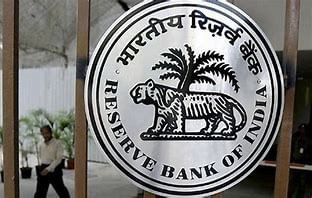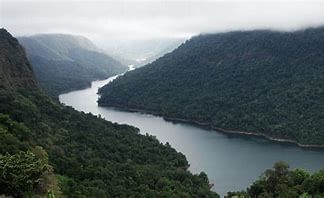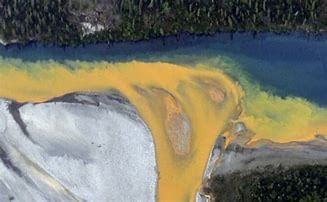UPSC Daily Current Affairs - 31st May 2024 | Current Affairs & Hindu Analysis: Daily, Weekly & Monthly PDF Download
GS3/Science and Technology
World’s first 3D-printed rocket engine
Source: Financial Express
Why in news?
AgniKul Cosmos, a startup originating from IIT Madras, has introduced the inaugural single-piece 3D-printed rocket engine globally, crafted and developed domestically within the nation. Collaborating with ISRO, the startup effectively conducted a sub-orbital trial flight of its self-constructed rocket — Agnibaan — from Sriharikota.
3D Printing
- 3D printing, acknowledged as additive manufacturing, constitutes a method for formulating three-dimensional objects from digital models through the incremental addition of material layer by layer.
- This additive technique involves the construction of layers using materials like plastics, composites, or bio-materials to produce objects of diverse shapes, sizes, rigidities, and colors.
- Compared to conventional subtractive manufacturing methods, this process enables more efficient and tailored production.
Noteworthy Applications of 3D Printing
- Various industries such as healthcare, automotive, and aerospace are leveraging 3D printing technology.
- In a recent illustration, Relativity Space, a company in aerospace manufacturing, launched a test rocket entirely composed of 3D-printed components, standing at 100 feet tall and 7.5 feet wide. Unfortunately, it encountered a malfunction following liftoff.
- During the peak of the Covid-19 pandemic in 2020, the healthcare sector employed 3D printers to fabricate essential medical equipment like swabs, face shields, masks, and components for ventilator repairs.
Agnibaan SOrTeD (Sub-Orbital Technology Demonstrator)
- Agnikul Cosmos successfully test-fired its rocket named Agnibaan SOrTeD, denoting a Suborbital Technology Demonstrator.
- A sub-orbital launch characterizes a spaceflight that enters outer space but doesn't complete an orbit around the Earth, with the spacecraft's trajectory intersecting the Earth's atmosphere or surface, precluding it from transforming into an artificial satellite or attaining escape velocity.
- This undertaking marked Agnikul's fifth attempt to launch the Agnibaan SOrTeD since March 22, positioning AgniKul as the second private entity to execute a rocket launch after Skyroot, the pioneer of India's premier privately developed rocket in 2022.
Features of Agnibaan
- Agnibaan represents a customizable two-stage launch vehicle capable of transporting payloads weighing up to 300 kg into an orbit around 700 km.
- The rocket incorporates a semi-cryogenic engine, a technology yet to be validated by ISRO in any of its rocket configurations.
- A semi-cryogenic engine operates at temperatures exceeding those of cryogenic engines but falling below traditional liquid rocket engines. It employs refined kerosene instead of liquid hydrogen, offering enhanced thrust for the rocket through a combination with liquid oxygen.
Test Flight Objectives
- The test flight aims to showcase indigenous technologies, amass crucial flight data, and guarantee the optimal functionality of systems for AgniKul's orbital launch vehicle, the 'Agnibaan,' which can access both low and high-inclination orbits and is entirely mobile, intended for utilization across over 10 launch ports.
Significance of Agnibaan
- Traditionally, engine components are manufactured individually and assembled subsequently. The adoption of 3D-printed manufacturing processes is projected to reduce launch expenses and streamline vehicle assembly, facilitating the provision of cost-effective launch services for small satellites.
GS2/Polity
DELAY IN JUSTICE DELIVERY
Source: Indian Express
Why in news?
As the summer court break commences, the discussion around the actual working hours of judges has resurfaced. A member of the Prime Minister’s Economic Advisory Council sparked this debate by mentioning that judges work for only a few hours daily, take prolonged vacations, and require modernization.
Reasons behind delay in justice delivery:
- Judicial vacancies:
- High court vacancies average about 30%, reaching nearly 50%. Subordinate court vacancies stand at an average of 22%. States like Bihar and Meghalaya have vacancies exceeding 30% for over three years.
- According to the India Justice Report, cases linger in subordinate courts for about three years on average and in high courts for approximately five years as of 2022.
- Shortfall in judges is measured against the sanctioned strength, which has been insufficient. The recommended ratio of judges to population has not been met, leading to prolonged delays.
- Other contributing factors include the nature and complexity of cases, as well as tactics employed by lawyers to extend trials.
- Lack of Infrastructure, Staff, and Quality:
- Courtrooms are in short supply, with many being subpar. Nationally, there is an average shortage of 26% in support staff.
- Quality deficiencies exacerbate structural issues. Disparities in knowledge and skills among legal professionals lead to procedural delays and appeals.
- Slow adoption of technology, coupled with infrastructure challenges, hinders progress in the judicial system.
- Government litigation constitutes a significant portion of the court's workload, further contributing to delays.
Way Forward
- Reducing government litigation: Improving laws and procedures can help decrease the number of cases.
- Judicial Training and Administration:
- Establishing a permanent administrative secretariat within each court can enhance efficiency.
- Setting higher standards for judges and legal practitioners can improve the quality of justice delivery.
- Increased Funding:
- Enhancing per capita spending on the judiciary, as highlighted in the India Justice Report, is crucial for improving the justice system.
GS3/Economy
RBI balance sheet grows in FY24
Source: Business Standard

Why in news?
The Reserve Bank of India (RBI) reported a 17% increase in its FY24 income to ₹2,75,572.32 crore. Its balance sheet grew 11.08% to Rs 70.47 lakh crore in the fiscal ended March 31, 2024.
What's in today's article?
Sources of income of RBI
- Interest on Loans and Advances:
- To Commercial Banks: The RBI lends money to commercial banks and charges interest on these loans, typically through mechanisms like the repo rate.
- To the Government: The RBI also provides temporary loans to the government through mechanisms like Ways and Means Advances (WMA).
- Investments in Government Securities: The RBI invests in various government securities (bonds, treasury bills) earning interest on these investments.
- Foreign Exchange Operations: The RBI manages India's foreign exchange reserves, earning income from investing in foreign assets and trading foreign currencies.
- Issue of Currency: The RBI has the exclusive right to issue currency in India, earning seigniorage from the difference between the value of money and the cost to produce it.
- Management of Government Accounts: The RBI acts as a banker to the government, managing accounts, collecting taxes, and charging for services.
- Fees and Commissions: The RBI charges fees and commissions for various services provided to the government, financial institutions, and the public.
- Open Market Operations (OMO): The RBI buys and sells government securities in the open market, profiting from the difference in prices.
- Earnings from Discount and Rediscount Operations: The RBI provides liquidity to commercial banks by rediscounting their bills and charging interest.
- Penalties and Fines: The RBI imposes penalties and fines on non-compliant banks and institutions.
- Miscellaneous Income: The RBI earns miscellaneous income from various activities, including subsidiary organizations and financial services.
Key highlights of the financial performance of RBI in FY 24
- Increase in balance sheet: The size of the RBI's balance sheet increased by 11.08% year-on-year to Rs 70.47 trillion as of March 31, 2024.
- Balance sheet normalization: The balance sheet has now normalized to its pre-pandemic level.
- Surge in net income: The central bank's net income surged by 141.22% for the financial year ended March 2024 due to reduced expenditures.
- Expenditure decline: The RBI's expenditure declined by 56.29% year-on-year, with provisions made for unexpected contingencies and risks.
GS-II/Governance
Tobacco Epidemic in India
Source: The Hindu

Why in News?
Tobacco poses a significant threat to public health globally, leading to preventable diseases and fatalities. Both consumers and producers are adversely affected.
- India, with approximately 260 million users, ranks second in the world for tobacco consumption, following China.
Impact on Health and Environment:
- Health Implications: Over 6 million workers in the tobacco industry are susceptible to health risks due to dermal absorption of tobacco.
- Environmental Effects:
- Tobacco cultivation depletes soil nutrients and contributes to deforestation.
- The processing of tobacco necessitates substantial wood usage, producing significant waste.
- It takes about 5.4 kg of wood to process 1 kg of tobacco.
Financial Burden:
- In the fiscal year 2017-2018, tobacco-related health issues incurred a cost of over ₹1.7 trillion for India, surpassing the health budget of ₹48,000 crore for the same year.
- Furthermore, annual expenses for tobacco waste cleanup amount to about ₹6,367 crore, excluding costs related to soil erosion and deforestation.
Awareness, Legislative Provisions, and Initiatives:
- Framework Convention on Tobacco Control (FCTC):
- Initiated in 2005, the FCTC strives to reduce global tobacco usage by aiding countries in developing strategies for demand and supply reduction.
- India is among the 168 nations participating in the WHO's FCTC program.
- COTPA Act, 2003:
- Abbreviated for Cigarettes and Other Tobacco Products Act, this legislation regulates the production, advertisement, distribution, and consumption of tobacco through its 33 sections.
- National Tobacco Control Programme (NTCP):
- Introduced in 2007, NTCP aims to enhance the enforcement of COTPA and FCTC, raise awareness of tobacco-related hazards, and aid individuals in quitting tobacco.
- Tobacco Taxation:
- Tobacco taxation, a globally recognized method for controlling tobacco usage, is also implemented in India.
Challenges Associated with Curbing Tobacco Consumption:
- Poor Implementation of Existing Measures:
- Smokeless tobacco products often disregard COTPA's packaging regulations, and illicit tobacco items are inadequately monitored.
- Penalties for non-compliance are outdated, with initial violations incurring a maximum fine of ₹5,000 for companies.
- COTPA prohibits direct tobacco advertisements but lacks clarity on indirect promotions, leading to surrogate advertising using products like elaichi to indirectly endorse tobacco brands.
- NTPC's Ineffectiveness:
- A study in 2018 revealed no substantial disparity in bidi or cigarette consumption between NTCP and non-NTCP districts, possibly due to inadequate staffing, resource allocation, utilization, and monitoring mechanisms.
- Tax Evasion:
- Efforts by the Indian government to tax tobacco are impeded by tax evasion practices such as purchasing tobacco in low-tax regions and engaging in illegal activities like smuggling, illicit manufacturing, and counterfeiting.
- Tobacco taxes in India remain low and have not kept pace with income growth, rendering tobacco products increasingly affordable over time.
Way Ahead:
- Enforcement Enhancement: India possesses robust legislation (such as COTPA, PECA, NTCP) to regulate tobacco use and production, necessitating stricter enforcement.
- Tax Adjustment: It is proposed that tobacco taxes be elevated to align with recommendations, inflation rates, and economic development.
- Diversification Support :The government could aid tobacco farmers in transitioning to alternative crops to avert job losses, with studies indicating that crops like jowar could yield higher profits than tobacco.
- Data Importance: Current data on tobacco usage is crucial to counter industry strategies effectively and manage tobacco consumption efficiently, as lacking such data may impede anti-tobacco efforts.
GS1/Geography
SHARAVATHI RIVER
Source: Deccan Herald

Why in news?
The National Green Tribunal (NGT) has instructed the Karnataka government to halt any unauthorized sand mining activities in the Sharavathi river.
- The NGT's southern zone bench addressed concerns about the ecological harm resulting from illegal sand mining practices.
About Sharavathi River
- Sharavati is a river that originates and flows entirely within Karnataka, India.
- It stands out as one of the rare westward flowing rivers in India, with a significant portion of its river basin situated in the Western Ghats.
- The river spans approximately 128 km before merging with the Arabian Sea at Honnavar in Uttara Kannada district.
- Notably, the Sharavati forms the majestic Jog Falls, where it cascades from a height of 253 m.
- Jog Falls ranks as the highest waterfall in India considering the single-drop waterfall and water volume, or the third highest (after Kunchikal Falls and Barkana Falls) when examining other criteria; all three waterfalls are located in Shivamogga district.
- The river and its surrounding areas boast abundant biodiversity, harboring numerous rare species of flora and fauna.
GS3/Science and Technology
GENE-DRIVE TECHNOLOGY
Source: Live Science

Why in news?
Genetically modified mosquitoes have been implemented in field trials in India, Brazil, and Panama, showcasing significant reductions in mosquito populations, up to around 90% during the experiments. The ongoing battle against mosquito-borne diseases has spurred the exploration of diverse tools, ranging from mosquito nets and insecticides to the use of symbiotic organisms like Wolbachia. However, with the emergence of insecticide-resistant mosquito strains, there is a pressing need for innovative approaches in mosquito population control.
Gene-Drive Technology (GDT)
GDT is a revolutionary genetic engineering method designed to disrupt the conventional rules of Mendelian inheritance. This approach involves modifying genes to facilitate the alteration of hereditary traits from one generation to another.
Key Components of Gene Drive
- The target gene to be disseminated
- The Cas9 enzyme responsible for DNA cleavage
- CRISPR, a programmable genetic sequence guiding the Cas9 enzyme
Implications of GDT
- Integrating the genetic material encoding the aforementioned components into an organism's DNA enables the rapid spread of specific gene variants within a population, superseding natural selection mechanisms.
Applications of Gene-Drive Technology
- GDT offers a promising strategy for eradicating disease-spreading insects like mosquitoes, which transmit diseases such as malaria, dengue, and Zika virus.
- Additionally, gene drives can be harnessed to manage invasive species like rodents effectively.
Concerns Associated with GDT
- Prolonged disturbances in ecosystems may ensue, potentially disrupting the ecological balance and triggering unintended ecological repercussions.
- There is a risk that gene drives could escape containment and spread uncontrollably across national boundaries.
- The technology could be exploited for malevolent purposes, including bioterrorism.
- The ethical dilemmas surrounding the selection of target species and the irreversible nature of GDT raise intricate moral and ethical questions.
GS3/Environment
ALASKAN RIVERS TURN ORANGE
Source: CNN

Why in news?
Rivers and streams in Alaska are undergoing a color transformation, shifting from a pristine blue to a rusty orange hue. This alteration is attributed to the release of toxic metals due to the thawing of permafrost in the region.
Key Takeaways
- The change in color and clarity is a result of metals like iron, zinc, copper, nickel, and lead leaching into the water bodies as permafrost thaws. Some of these metals pose a threat to the local river and stream ecosystems.
- Arctic soils naturally contain organic carbon, nutrients, and metals such as mercury within their permafrost. With rising temperatures, these minerals are being exposed as permafrost melts, affecting the surrounding water sources.
Permafrost
- Permafrost refers to soil or underwater sediment that remains below 0°C for over two years. The oldest permafrost has been frozen for approximately 700,000 years.
- Around 15% of the Northern Hemisphere or 11% of the global surface is covered by permafrost, encompassing regions like Alaska, Canada, Greenland, and Siberia.
- In the Southern Hemisphere, permafrost is limited to mountainous areas like the Andes of Patagonia and the Southern Alps of New Zealand.
Alaska's Geographic Features
- Alaska is situated in the extreme northwest of North America, with the Alaska Peninsula being the largest in the Western Hemisphere.
- Boundaries of Alaska include the Beaufort Sea, Arctic Ocean, Canada's Yukon territory, British Columbia province, Gulf of Alaska, Pacific Ocean, Bering Strait, Bering Sea, and Chukchi Sea.
Alaska Statehood
- Alaska became the 49th state of the United States on January 3, 1959, with Juneau as its capital located in the southeastern panhandle region.
GS3/Environment
The Link Between Climate Change and Rising Incidents of Severe Turbulence in Aircraft
Source: Indian Express

Why in News?
After a Singapore Airlines flight from London to Singapore was hit by sudden and severe turbulence over Myanmar, a Qatar Airways flight from Doha to Dublin encountered severe turbulence over Turkey. The recent incidents highlight the impact of explosive growth in air traffic and climate change on the occurrence of serious turbulence
Flight-Turbulence: Types and Causes
- Meaning of Flight-Turbulence:
- Turbulence is an irregular motion of the air resulting from eddies and vertical currents. It can range from minor bumps to severe disturbances that can affect aircraft control and structure. Turbulence is often associated with fronts, wind shear, and thunderstorms.
- Effects of Flight-Turbulence:
- There are different types of turbulence with varying effects:
- Light turbulence: Causes slight bumps and minor altitude changes.
- Moderate turbulence: Results in more noticeable altitude and attitude changes but the aircraft remains under control.
- Severe turbulence: Involves significant and sudden altitude and attitude changes, potentially leading to temporary loss of control.
- Extreme turbulence: Causes violent aircraft movements and is nearly impossible to control.
- Causes of Flight-Turbulence:
- Mechanical turbulence: Arises from friction between air and irregular ground surfaces or man-made structures, creating eddies.
- Convective or thermal turbulence: Occurs due to rapid rising of hot air and descending of cooler air, generating convective air currents.
- Frontal turbulence: Results from friction between opposing air masses and warm air lifting along frontal surfaces.
- Wind shear: Involves changes in wind direction or speed over a distance, such as in temperature inversions or near jet streams.
- Clear air turbulence (CAT): Sudden and severe turbulence that is challenging to predict or detect, sometimes considered a type of wind shear turbulence.
Impact of Climate Change on Flight-Turbulence
- Findings of the study:
- Research suggests that climate change could increase the frequency and severity of turbulence.
- How can this be claimed?
- Climate change is strengthening jet streams, leading to more turbulence occurrences.
- There has been a significant increase in clear air turbulence (CAT) between 1979 and 2020, especially at mid-altitudes.
- Severe CAT durations over the North Atlantic have risen by over 55% during this period.
- Future predictions:
- It is anticipated that severe turbulence will become more common compared to light or moderate turbulence.
- Not only CAT but other forms of turbulence like mountain wave turbulence and near-cloud turbulence are expected to intensify due to climate change.
GS3/Environment
COALITION FOR DISASTER RESILIENT INFRASTRUCTURE (CDRI)
Source: Financial Express

Why in news?
At the UN 4th International Conference on SIDS in Antigua and Barbuda, the Coalition for Disaster Resilient Infrastructure (CDRI) published a Call for Proposals for funding to improve infrastructure resilience in Small Island Developing States (SIDS).
- Background: The financing appeal, totaling $8 million, was revealed during the SIDS4 Conference in Antigua and Barbuda as a component of CDRI's Infrastructure for Resilient Island States Programme (IRIS).
About Coalition for Disaster Resilient Infrastructure
- The Coalition for Disaster Resilient Infrastructure (CDRI) is a global partnership comprising national governments, UN agencies, multilateral development banks, the private sector, and knowledge institutions. It aims to enhance the resilience of infrastructure systems to climate and disaster risks, supporting sustainable development.
- CDRI is not currently an intergovernmental organization. It operates based on endorsements from national governments that become members, influencing its agenda and governance.
- CDRI's strategic priorities include Technical Support and Capacity-building, Research and Knowledge Management, and Advocacy and Partnerships.
- Launched by Indian Prime Minister Narendra Modi at the 2019 UN Climate Action Summit, CDRI focuses on research and knowledge dissemination in infrastructure risk management, standards, financing, and recovery mechanisms.
CDRI's Focus Areas and Objectives
- CDRI primarily concentrates on enhancing disaster resilience in ecological, social, and economic infrastructure. This encompasses natural resources, social facilities, and economic elements like energy, transport, and communication.
- The objective is to drive significant changes in member countries' policies and future infrastructure investments while reducing economic losses from disasters.
Membership and Secretariat
- As of 2023, CDRI has 39 members, including 31 national governments and 8 organizations. Several countries have been invited but await membership approval.
- The CDRI Secretariat is headquartered in New Delhi, India.
|
38 videos|5288 docs|1117 tests
|
FAQs on UPSC Daily Current Affairs - 31st May 2024 - Current Affairs & Hindu Analysis: Daily, Weekly & Monthly
| 1. What is the significance of the world's first 3D-printed rocket engine? |  |
| 2. How has the delay in justice delivery impacted the legal system? |  |
| 3. How has the RBI's balance sheet grown in FY24? |  |
| 4. What is the significance of the Sharavathi River? |  |
| 5. How does the gene-drive technology work and what implications does it have? |  |





















